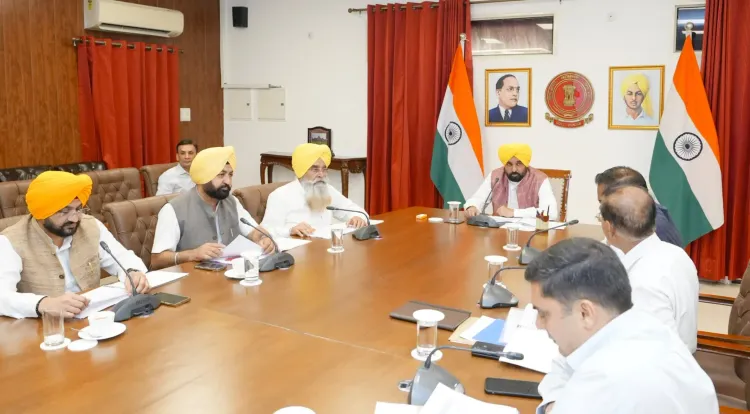How is Punjab CM addressing groundwater depletion?

Synopsis
Key Takeaways
- 14-point action plan approved to address groundwater depletion.
- 115 out of 153 blocks in Punjab are over-exploited.
- Focus on enhancing canal water usage.
- Promotion of efficient irrigation techniques.
- Revitalization of abandoned water infrastructure.
Chandigarh, June 20 (NationPress) In a significant move, Punjab Chief Minister Bhagwant Singh Mann has approved a comprehensive 14-point action plan aimed at preserving and replenishing groundwater as part of the Integrated State Water Plan. During a meeting with the Water Resources Department, the Chief Minister highlighted the urgent need for this plan, noting that out of 153 blocks in the state, 115 are classified as over-exploited regarding groundwater extraction.
Mann emphasized that the strategy prioritizes the conservation of groundwater while also promoting the increased use of canal water for various applications. He expressed concern about the alarming average annual decline of water levels by 0.7 metres due to the extraction of 5.2 billion cubic metres of water. The plan aims to tackle these issues by reducing groundwater demand, minimizing agricultural water usage, enhancing irrigation techniques, and implementing methods for groundwater replenishment and artificial augmentation.
Furthermore, the Chief Minister underscored the necessity of seeking additional sustainable sources, exploring deep aquifers, and advocating for the utilization of surface water. He noted the government's ongoing efforts to restore and expand existing surface water infrastructure.
Mann reaffirmed the government's commitment to ensuring access to water for every tail-end user, stating that they have already revitalized 17,000 watercourses spanning approximately 6,300 km that had been abandoned for 30 to 40 years, along with 79 canals covering 545 km after a similar period of neglect.
Additionally, the Chief Minister endorsed the 14-point action plan as part of the Integrated State Water Plan, which includes a robust irrigation strategy for optimal water use in agriculture. The goal is to transition about 1,579,379 hectares to various water-efficient techniques like drip and sprinkler irrigation, moving away from traditional methods to minimize water demand and reduce wastage while enhancing efficiency.







